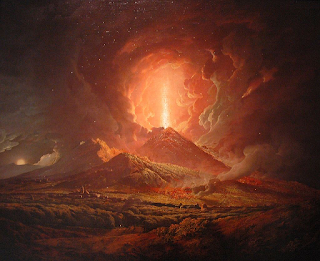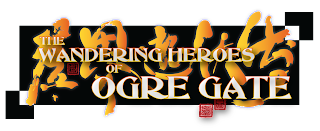
Characters*:
Xue Lingsu (Purple Cavern Sect)
Xi Kang(Affiliated with Mr. Red Claw)
Zhi Zhu (No Sect)
Long Shu (Purple Cavern Sect)
Min (Purple Cavern Sect)
Rong (Tree-Dwelling Nun Sect)
Nuan (Xi Kang's Disciple and a former Flying Phantom)
The party returned to the Banyan after a venture north where they went to Ogre Gate Inn and recovered an invaluable jade horse. After they reached Zun City, Kang re-united with his disciple, Nuan, who had just stolen the Manual of Changing from Golden Dragon Temple. She also informed him that they held a prisoner in their catacomb, a woman had found a way to kill the Yao.
Last session the martial sects had split into three warring factions: Righteous Faction, Demon Moon Faction and Golden Dragon Faction. Their sects had allied with Demon Moon so they went to north into the swamps to reach Demon Moon Cult's headquarters. When they arrived they participated in a meeting with Lady Plum Blossom and Jade Priestess (the second chief of Demon Moon Cult). The leaders of Nature Loving Monk Sect and Tree Dwelling Nun Sect were also present. While Lady Plum Blossom wanted to attack Golden Dragon right away, there was no agreement on the matter. Ultimately they decided it was best to send in a team to recover the Golden Dragon's prisoner and see what other information they could gather. Long Shu, Kang, Zhi Zhu, and Nuan went north by carriage to infiltrate Golden Dragon. As they left, the month of the Demon Moon began.
A few days into their journey they were stopped at a pass by Nuns of Heiping who demanded 300 spades for passage. Long Shu refused to pay and threatened them. A fight ensued but the party quickly took control of the action, dispatching a number of nuns before their leader agreed to surrender. They took the nun's money and continued on their way.
When they reached Golden Dragon Headquarters they sent Zhi Zhu in first as a scout. She snuck into Golden Dragon palace and spied on Bronze Master. He discussed the prisoner with one of his subordinates, saying he had a way to get her to talk, as he patted a lacquered box in his hands. He then put the box and a knife in a cabinet, which he locked. Zhi Zhu waited for him to leave, then went in the room and broke open the cabinet, taking both items. As she fled, a junior disciple spotted her and sounded the alarm. She was able to elude capture, but the rest of the sect spread over the grounds to find intruders.
Returning to the party and showing them her discovery, Zhi Zhu and the others decided to use the alarm to their advantage. They captured three junior disciples, took their clothes, and went to the catacomb entrance. There they saw Red Maiden keeping watch.
Long Shu told them that Bronze Master wanted her to take the prisoner to him immediately. He told a conniving story and she took them into the catacomb with her to recover the prisoner. On the way out, they stabbed her in the back. She struck back but Kang stabbed her in the chest with the Wind Saber of Sunan. Out of the blue a man leapt from the cliffside into he fray shouting "I'll save you my love!" and attacked the party. They cut him down and the woman began to weep.
Recognizing it was her husband, Long Shu healed him with his internal energy hoping to earn Red Maiden's good will. Then they fled south to rejoin their caravan with the prisoner.
The prisoner was a woman named Niang. She had come to the Golden Dragons seeking their assistance. She had broken into the imperial palace, stolen the lacquered heart box of a yao* and killed a number of yao on her way out using a dagger called the Key of the Pillar of Wisdom. She went to Golden Dragon Sect hoping to ally with him but they stole her belongings and imprisoned her. She revealed that the box contained the heart of her husband, who she was hoping to help cure. Following a rumor that head of Zhaoze Sect knew a way to restore Yao, she asked the party to take her to him.
On way, with Demon Moon in full swing, they first encountered Hungry Ghosts. They gave food and the ghosts went away. Niang explained that the head of Zhaoze Sect, Shan Lushan, had once been a yao himself, but had figured out a way to return his heart to his body. The party was reluctant to go to him, as they had killed his wife, Lady White Blade. They were unsure if there was still a grudge (though they had let him go rather than kill him).
As they passed through Zun Forest their carriage was attacked by a demon tree. It lifted them into air slaughtering and turning their men with its the roots. They leapt to the ground and fled as fast as they could while their men's eyes turned black and their bodies warped.
Reaching the shores of Zhaoze Lake they sent fire signal. A boat arrived with men who took them to Zhaoze Island. They spoke with Lushan about their grudge and he agreed to help them if one of their members would face him in a fair fight after things were settled. He explained that by performing a particular melody on his flute while the ritual was reversed, he was able to restore his body. He did not know if it could be done for another but was willing to try.
This is where the session ended.
*The Yao are the loyal guards and servants of the emperor. They were once martial heroes but were captured and forced to undergo a ritual where their heart is cut out and placed in a box. This makes them loyal but also imbues their bodies with the ability to regenerate. They are virtually impossible to kill.










